This postcard depicts the Spokane’s Great Northern train station, which was also used by the Spokane, Portland & Seattle Railway. The water in the foreground is the Spokane River, as the train station was on Havermale Island.
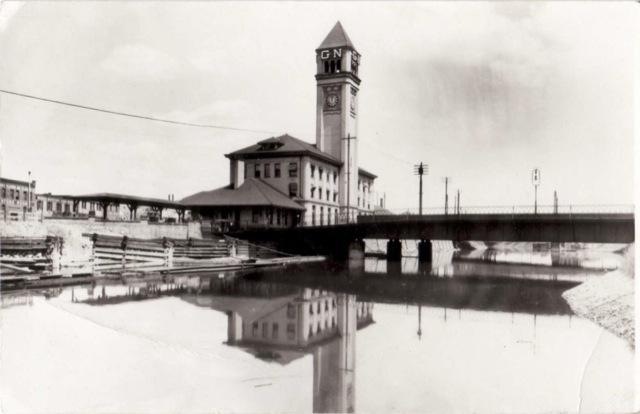
Click image to download a PDF of this postcard.
Spokane had three train stations, one of which was right across the river from the GN station: Union Station, which served Union Pacific, Milwaukee Road, and Spokane International. The two stations are both visible in the postcard below, while a close-up of Union Station is below that.
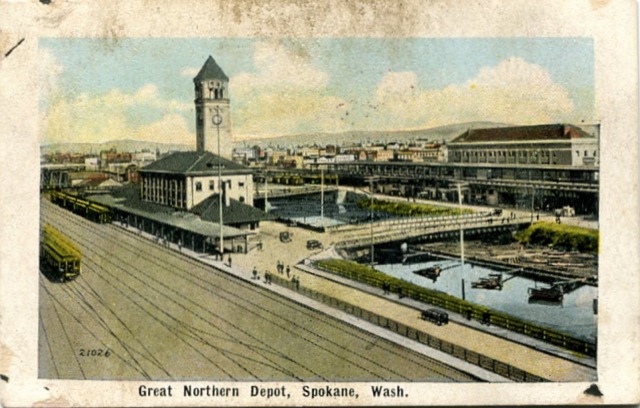
Click image for a larger view.
Both of these stations were demolished for the 1974 Spokane Exposition, though the Great Northern clock tower was saved and remains in the park created after the expo.
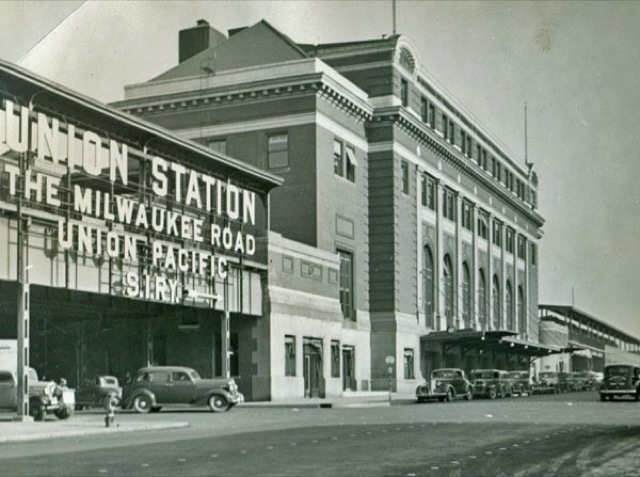
The Northern Pacific station was located several blocks away from the other two and was the only one that served only one railroad. Although NP was, with GN, co-owner of the SP&S, it exchanged passenger cars with SP&S trains in Pasco, so it didn’t need to connect with the SP&S in Spokane.
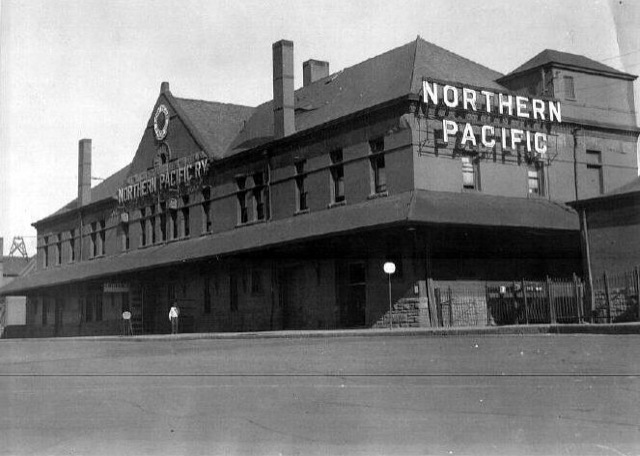
When Amtrak took over passenger service, it decided to use the NP station. For a time, the station was painted an ugly greenish-blue color, but in 1994 it was restored into an “intermodal center” that service Amtrak, Greyhound, and Trailways. The photos below show the station in 1986 and after the restoration.

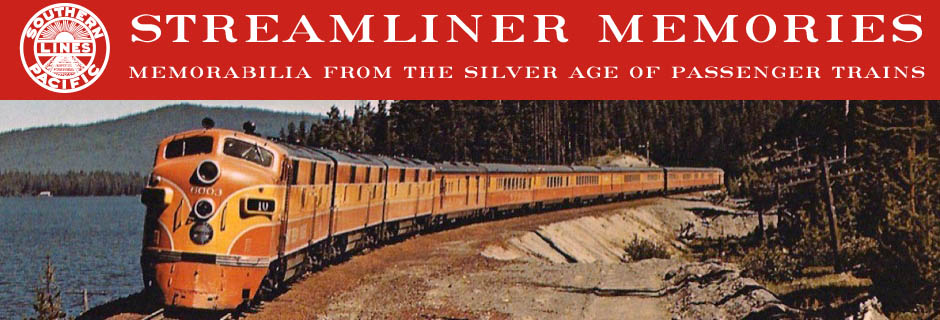
I am glad that I was able to explore this area for a very short time, which would be completely changed forever for Expo 74. When I was about 13 I took a circle trip from my home in Seattle via the NP Mainstreeter overnight to Spokane, then back on the GN’s Western Star the same afternoon. I remember well venturing from the NP station at daybreak, going past Union Station, & seeing the “SI” logo in gold leaf on a window. (I really wish I had gone inside!) I then crossed the river to the GN station. I remember sitting on a bench in the morning sun at the GN station, and watching a train appear from the west on the elevated tracks across the river at Union Station with a very long string of stock cars, at the end of which was a single yellow coach that stopped briefly at the station before moving off again. That train I found out later was the UP’s “City of Hinkle”.
That’s a great story! Was this something that you wanted to do on your volition or was it just a circumstance?
I didn’t get to do anything that adventurous at 13, although I might have liked to. I was born in Colfax, but grew up in Spokane, so I remember a lot of the railroad yards, and a few of the stations. I was about 15 when they tore it out for Expo 74, I remember a lot of people were very grateful that Spokane was chosen because even though that area was hugely historic, it was apparently a magnet for homeless people. Of course, 40+ years later we still don’t know what to do about that problem.
I grew up in the Spokane Valley, 1 block north of Sprague. There were 2 sets of parallel train tracks because the line had a switch just past where it crossed over Sprague near Argonne. The line further to the north ran over to Spear Road and there was like a very small train station where the line ended. There are businesses in there now, but I would like to know when it was built and why. By the 60’s it was no longer in use and sat vacant for many years. I had been reading elsewhere that the railroad tycoons had a lot of money and to avoid taxes they would build magnanimous buildings that may or may not be needed at the time. There was also a brickyard where the current Vista Industrial Park is located, maybe they just had leftover bricks, but it was a nice little piece of property with a very sturdy looking brick building that the railroad did something with? I would just love to know the back story, but it’s such an out of the way place, probably not many records?